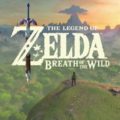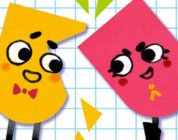The Legend Of Zelda:Breath Of The Wild Review
Developer: Nintendo Entertainment Analysis & Development, Nintendo Entertainment Planning & Development
Publisher: Nintendo
Platform Reviewed: Wii U
Release Date: March 3, 2017
Acquired via: Purchase by Reviewer
Playing this game was extremely bittersweet for me. As much as Nintendo upsets me nowadays, I absolutely love their games. And there is no Nintendo game series I love more than The Legend of Zelda. Ever since the original game mesmerized me on the NES, I have had a soft spot for Link and his travails.
You see, this series has been at the forefront of some of the biggest moments of my life. The Legend of Zelda on the NES pulled me back into gaming. I introduced The Legend of Zelda III: A Link to the Past for the SNES to my then-wife. My son was raised playing The Legend of Zelda: Ocarina of Time on the N64. My daughter cut her teeth on The Legend of Zelda: Twilight Princess. Other games in the series filled the spaces in between, encompassing other Nintendo consoles.
With The Legend of Zelda: Breath of the Wild, however, I was forced to make a pretty dastardly choice by my standards. I could either buy it for the Wii U – a dead console in Nintendo’s eyes – or bite the bullet and buy a Nintendo Switch with the game – a new console with new-console bugs that I refuse to buy. I bought it for the Wii U.
At least I could say that the last full retail game I purchased for the Wii U is one of the best games I’ve played in a long while.
Before I go any further, just know I’m not going to heap blind praise on this game because of nostalgia or some hidden love for Nintendo. There are some things that keep it from being absolutely perfect. To wit: there are framerate issues. Also, Nintendo abandoned the much-ballyhooed second screen feature of the Wii U’s gamepad, proving they gave up on it. But I will say that the positives FAR outweigh the negatives. In many ways, this feels like the send-off my neglected but loyal Wii U deserved.
You begin the game the same way you usually do. You are Link, the hero of this tale. The only thing is, Link doesn’t know he’s supposed to be a hero. In fact, neither you nor he know anything. He simply wakes up to a mysterious voice, emerges from some hydro-slumber thing, and emerges from the cave where he slept upon this strange world. Now you have to help him figure out everything from here on.
This game and this world will not hold your hand for anything. From the moment you wake from your slumber until the final confrontation, you and Link are all either of you have. Thankfully, the world is ready to tell its secrets if you’re willing to listen and learn. You will get a small amount of goading as to what you have to do next. But the game makes you figure out how to do what it is you have to do. This basic lack of direction forces you to run around and try to discern what it is you have to do.
The running around and exploring is the main focus of Breath of the Wild. It may irk those who are used to having someone point out what has to be done next. But in my opinion, this is the absolute best mechanic of the game. Traipsing around the world and discovering everything it contains is among the biggest joys I had with this game. It also contained some of the most frustrating aspects, but we’ll get there.
The one thing that Zelda games have lacked for a while is true exploration. The original NES game had that mystery of the unknown. You didn’t start out with a full map of the area and large dots pointing you to where you had to go. The idea was to run around, getting into trouble and trying to discover all the secrets in the world. Even my favorite game from the series until now, A Link to the Past, showed you where everything was. The only adventure was in figuring out how to get there. But you knew where your destination was beforehand.
With Breath of the Wild, you have to explore to discover everything. Very little is pointed out to you on a map. In order to get places, you have to find these places. And that exploring is the single greatest thing about Breath of the Wild. Yes, you will get into trouble. A lot. But that is the whole purpose of the game. In its opinion, you have to know the dangers before you can figure out how to deal with them.
Upon emerging from the cave Link slept in, you are treated to an in-game cutscene where the vastness of Hyrule is shown to you. It looks expansive, but it is more so than the initial cutscene reveals. Everywhere you go, there are structures and caves and enemy outposts and safe areas that you must explore in order to find. And there other regions that are not visible via the naked eye. There are only four dungeons in total, but there are numerous shrines you can visit. Nintendo claims there are about 100 shrines in the game; I’m nowhere close to finding all of them. But the game eggs me on, goading me into finding them.
Many of the shrines and all of the dungeons are in very unforgiving areas. In addition to dealing with Bokoblins, the main combat threat, you have to deal with the terrain and the elements. Yes, the elements! You are equipped with a thermometer, and if you venture into colder areas without proper cover you will freeze to death! Trying to climb a mountain during a rainstorm will often see you slip off, sometimes to your doom. And if you have a nice, powerful metal weapon wielded during a thunderstorm, don’t be surprised if you are fried in place by a lightning strike.
Let’s be honest for a second: you will SOMETHING to death regularly. Whether your death comes at the hands of a horde of bokoblins, the elements, drowning, carelessness, falling off a tower, shield surfing off a cliff (that’s a thing!), or the fact that it’s a Wednesday (not true but possible), Link WILL die. The Game Over graphic will haunt you mercilessly. Get used to it!
Those deaths are the price of playing, but they are not the deterrent you would think they are. You will resurrect with everything you had before you did whatever it is you did. That is penalty enough. If you were penalized more harshly every time you died, you would reach a shrine with nothing other than your underwear and a branch.
The shrines are not just useless alcoves. They are strewn with puzzles that test Link’s abilities. Earlier shrines will grant Link runes that give him unique powers. Later shrines are real brain teasers, making players master Link’s runic abilities as well as his combat prowess. The shrines can be brutal, but they prepare you for what lies ahead. Some of the puzzles in them are ingenious, and solving them feels incredibly satisfying.
The combat is absolutely awesome in Breath of the Wild, a real evolution from the combat of previous entries in the series. While you can still target individual enemies like in previous games, the combat is much deeper. Enemies have intelligence here, and they do not just rush into combat haphazardly. There is actual strategy involved in dispatching your foes. Bosses ratchet up the smarts and really force you to learn and adapt to their attack patterns.
Your evolution in combat here is determined by how well you parry and block more than by how you attack. Link has the ability to parry an attack, similar to how Bayonetta does. A successful parry slows down time just like in Bayonetta and allows Link to perform a flurry attack in response. Performing a successful guard with a shield provides a similar advantage. Learning how and when to do these maneuvers are critical to surviving the onslaught most enemies dish out.
Link can dish out his own brand of pain as well. He starts out with little more than a tree branch and instinct. As you guide him through Hyrule, he will amass a small armory of weapons, shields, and clothing. The start out simple and weak and eventually grow in prowess and effectiveness. One thing they all have in common, however, is their malleability. No matter how strong they are, they will eventually break.
The weapon and armor breaking mechanic is one that has pissed off many a player of Breath of the Wild. Personally, I don’t mind it too much. It’s to be expected that a tree branch or flimsy ax will eventually fall apart. The idea is to keep exploring, finding a stronghold you can overtake, and pillaging everything you can find within afterward. This exploration leads to many moments like these, and they are immensely gratifying when surmounted.
One thing you will realize while playing this game is that the exploration and combat lead to you picking up many reagents. The may not seem obvious at first, but they are part of the game’s deep cooking system. The open-ended nature of the game allows you to do things such as climbing trees. While climbing, you can pick apples and other things. Those apples can be used as food as-is, but cooking them unlocks stat benefits such as increased health, strength, or stamina.
(Oh, I forgot: you have a circular stamina bar that depletes whenever you run, swim, climb, or otherwise exert yourself. Remember the drowning thing I mentioned earlier? That happens when you run out of stamina while swimming.)
Better yet, when certain combinations of items are cooked together, they can unlock superfoods that heal many hearts, boost stats, and help you traverse certain areas. You can spend literal hours trying out new recipes. Some may be very beneficial; other may just be a waste of time. The only way to find out is to try.
You will find some unforgiving areas during Link’s travels. Remember the elements I mentioned earlier? You will enter very cold or very hot area. How you maneuver through these areas will determine how well you do. Early on, you will have to maneuver Link through a snow-capped area in order to reach a shrine. Learning how to start a fire will help you through these areas. Then again your pyromaniac acts may set an entire forest on fire. Whatever it takes to survive…right?
I spent five hours wandering through Hyrule, doing my best to survive. When I told my daughter I had the game, she rushed over, quickly overwrote my save file (with my permission), and decided to go at it from scratch in Hyrule. She died a baker’s dozen times, but she enjoyed every second of it. I had to pry her away from the console when it was time to go. My son had a similar experience two days later when he came to visit. Regardless, I was happy restarting the game when they were done. Experiencing the wonder and grandeur of the game’s inception did not wear on me.
All of this is said without mentioning the game’s presentation, which is absolutely top-shelf. This game is gorgeous, even on the “inferior” Wii U. Every visual and aural touch in this game is beyond reproach. It’s a looker on the Switch, and I would call the game one of the most beautiful on the Wii U. The graphical fidelity is really something truly worth salivating over. Visuals are not everything; gameplay trumps all. But when a great-playing game is married to visuals as amazing as these, it’s a landmark achievement. The soundtrack is equally noteworthy. You can tell Nintendo worked extra-hard to make this game memorable in every way.
This game is not without its faults. When fighting large mobs of big baddies, the framerate dropped to a level I will not repeat in polite company. From my understanding, Switch owners are feeling the same pain, especially with their consoles cradled in its dock. The game outputs at 900p in the cradle, and those framerate issues seem worse than my issues on the Wii U. But it still grates at me when it happens.
Also, the Wii U’s most hyped feature at launch – a second screen you can use for maps, inventory, or what not – is cut at the knees here. You can only play on one screen – be it the TV or the gamepad – at a time. Honestly, this was not as bad a detriment as I initially feared. Being able to play Breath of the Wild while my daughter plays Grand Theft Auto V on the PS4 and her “boyfriend” (that still rankles me!) plays Left 4 Dead 2 on the Xbox One via Remote Play is quite the convenience.
And, yes, the weapon and armor breaking can piss me off on occasion, especially when I’m trying to handle three or more enemies at a time. I know I can mitigate that irritation by switching to a fresh weapon quickly – there are quick equip shortcuts for runic power as well, something I have not touched on here but are vital to one’s survival in this world. But I cannot count how many times I am embroiled in combat with about five bokoblins, down to my last heart and struggling to survive, only for my weapon to disintegrate.
Will that ultimately detract from the gameplay experience? Not entirely! Framerate issues aside, The Legend of Zelda: Breath of the Wild is an experience like none other. The absolute wonder of exploring this world is reason enough to grab this game. The joy and satisfaction it elicits are almost without peer. It is not a perfect game in my eyes; it’s hard to achieve perfection no matter who is reviewing a game. But the few glaring faults it exhibits cannot possibly outweigh the sheer fun it offers. As a sendoff for my trusty Wii U and as a starting point for the Switch, Nintendo and Zelda fans cannot go wrong with this game.





